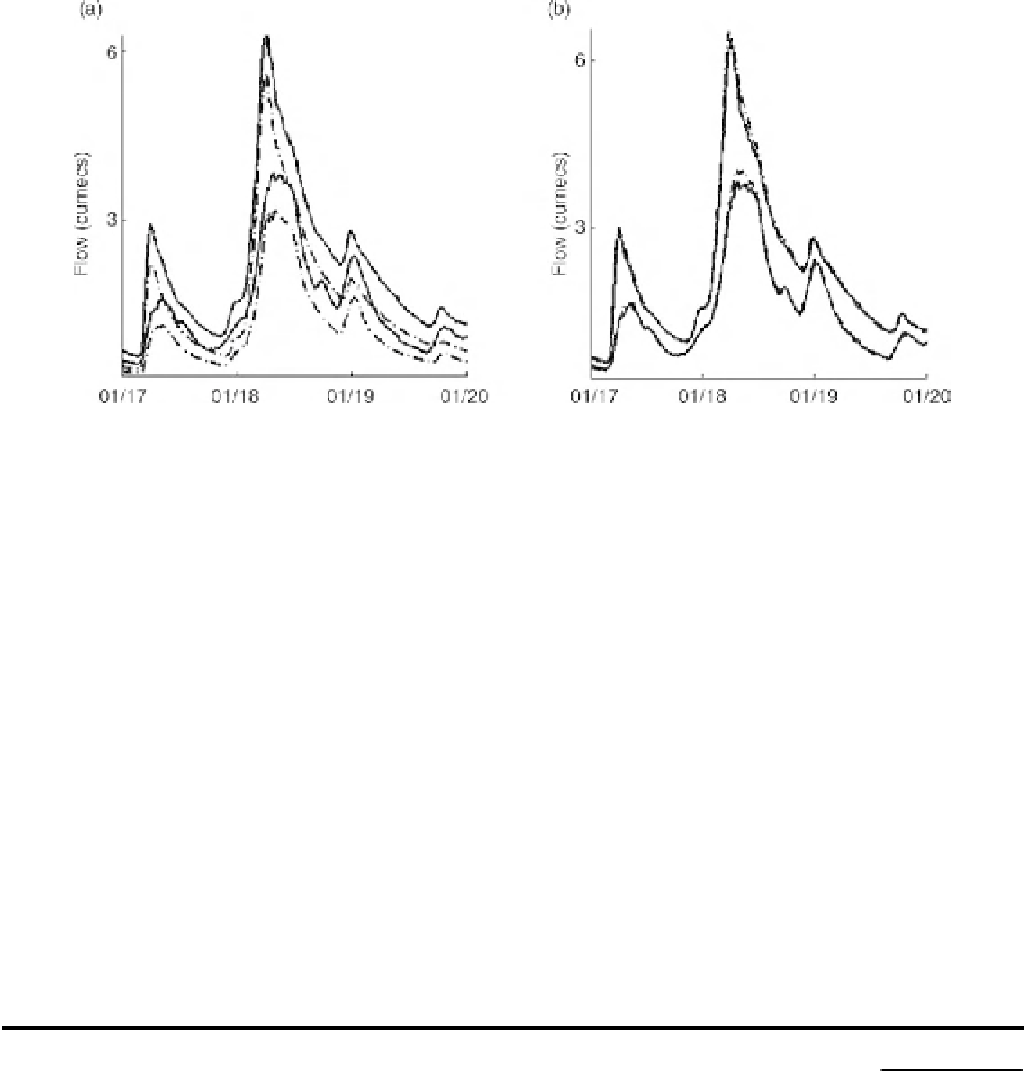Environmental Engineering Reference
In-Depth Information
Fig. 3.14
Prediction uncertainty bounds at gauge 10 due to the 18 January 2007 rainfall event: (a) afforestation,
(b) soil degradation.
Summary and Conclusions
variability were observed, with a distinctly dif-
ferent response following the dry 2006 summer,
and as the observation period has lengthened,
seasonal variability has been discerned. Unim-
proved grassland provides a significantly more
damped runoff response.
Based on the Pontbren data, amultiscalemodel-
ling procedure has been developed. At the scale of
a field or hillslope, highly detailed physics-based
models provide the basis to predict effects of
small-scale management interventions, such as
tree shelter belts. Simple metamodels appear to
capture well the response of the detailed physics-
based models, and provide the basis of represen-
tation of individual fields within a distributed
The results of an intensive experimental pro-
gramme have been reported from the Pontbren
multiscale experiments. Detailed characterization
of soils and runoff processes has provided data to
constrain models developed to represent both
local-scale and catchment-scale responses. A com-
plex story emerges, with important roles for drain
and overland flow as the primary runoff-produc-
ingmechanisms fromimproved pasture. Typical-
ly the low-permeability B horizon restricts
downward movement of water within the profile
and overland flow occurs due to A-horizon satu-
ration.However, important effects of interannual
Table 3.4
Median value of relative reductions in total flow and peak flow (in percent relative to current-day land use)
Gauge 2
Gauge 5
Gauge 6
Gauge 7
Gauge 9
Gauge 10
Afforestation
% reduction in total runoff
24
% reduction in peak
ow
14
13
12
14
15
12
Soil degradation
% reduction in total runoff
0
% reduction in peak
ow
9
9
9
9
4
8





